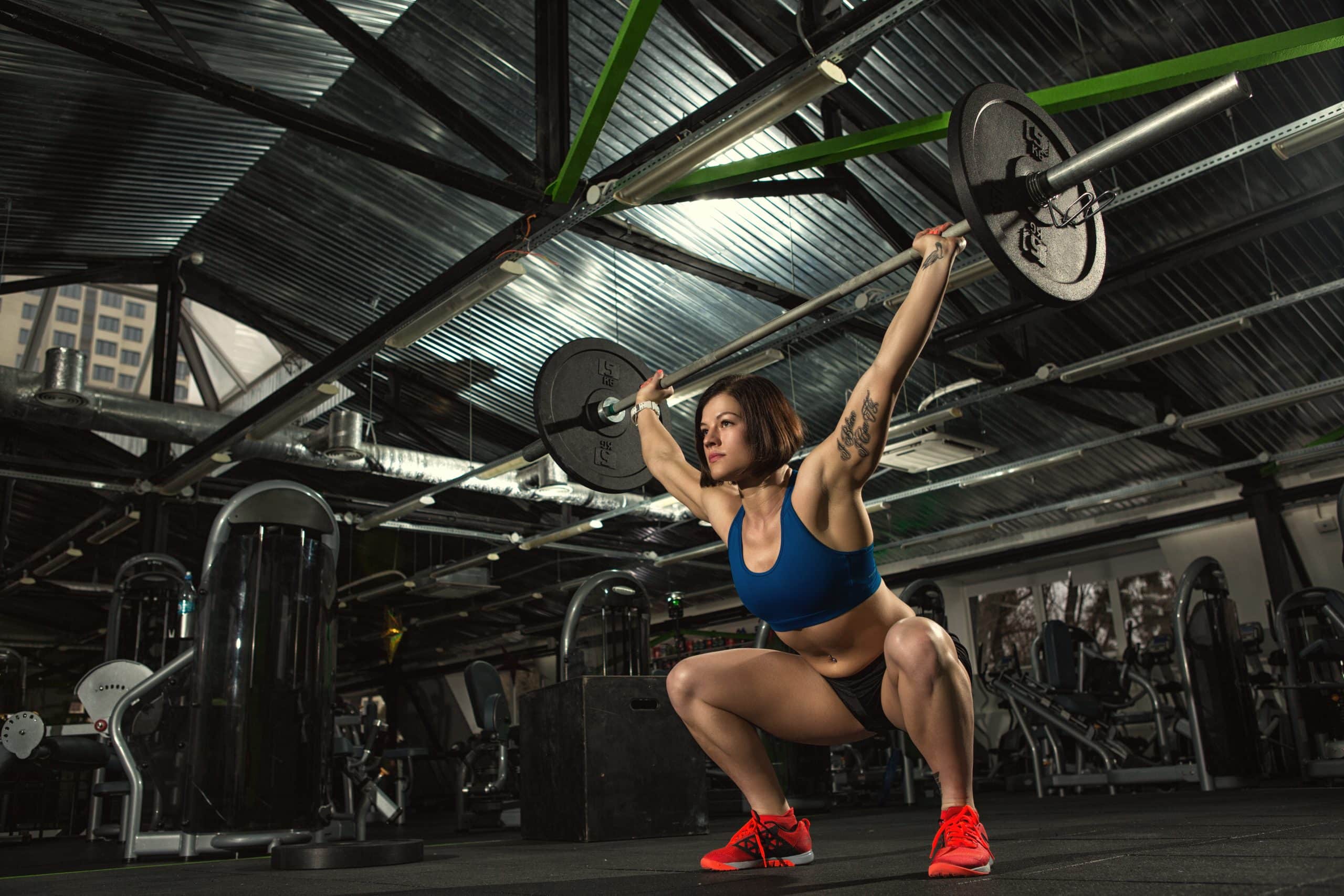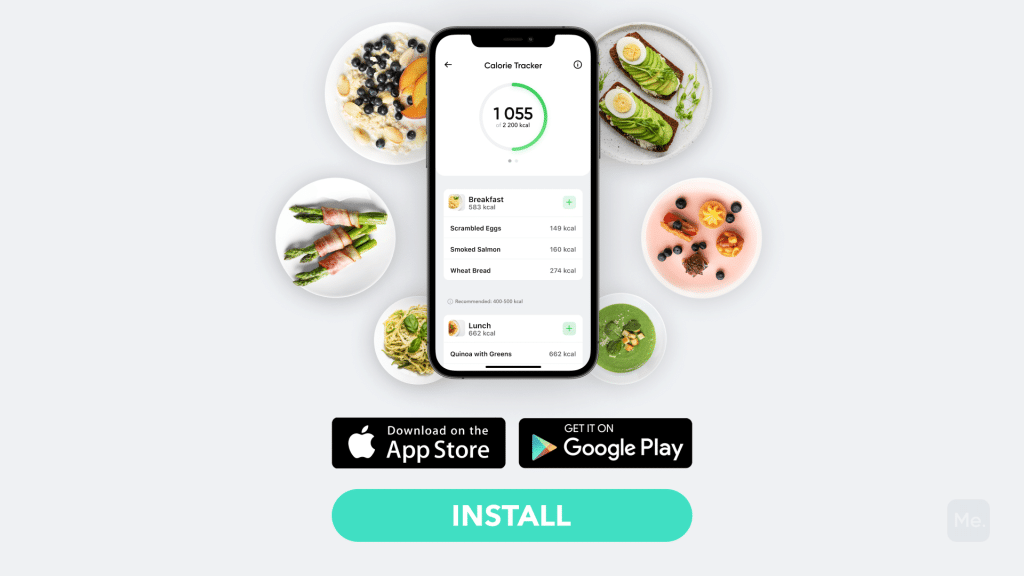When you hear the word “bodybuilding,” you might think of people with massive bulging muscles lifting enormous weights in a gym. Powerlifting, on the other hand, might make you think of incredibly strong people squatting, deadlifting, and pressing mind-bogglingly heavy weights in a competition. And while both these activities do involve some overlap, there are also some key differences that set them apart. In this article, we’ll look at the key differences and similarities between powerlifting and bodybuilding, as well as the pros and cons of each. By the end, you should have a better idea of which one is right for you.
Get your personalized
meal plan!
Powerlifting Vs Bodybuilding Difference 1 – Goals
The first major difference between powerlifting and bodybuilding is their respective goals. Powerlifting is primarily about strength, while bodybuilding is primarily about aesthetics.
This means that, in powerlifting, the focus is on lifting as much weight as possible, regardless of how you look doing it. The goal is simply to move the weight from point A to point B. Form and technique are important, but they’re secondary to raw strength.
A common phrase in powerlifting is “one rep max,” which refers to the maximum amount of weight you can lift for a single repetition. Powerlifters will often train for specific one rep maxes in order to hit new personal bests in competition.
In contrast, bodybuilding is all about building an aesthetically pleasing physique. This means that form and technique are much more important than they are in powerlifting. In bodybuilding, the focus is on lifting weights in a way that maximizes muscle growth and definition.
Muscle hypertrophy (growth) is the primary goal of bodybuilding, and as such, training programs are designed with that in mind. This often means using lighter weights for higher reps, with an emphasis on time under tension.
Many nuances go into designing an effective bodybuilding workout, and we’ll discuss those later on.
Read More: Powerlifting For Seniors For Added Strength: The Best Powerlifting Exercises For Seniors
Powerlifting Vs Bodybuilding Difference 2 – Workout Programs
The second major difference between powerlifting and bodybuilding is their respective workout programs. To achieve their respective goals, powerlifters and bodybuilders use different exercises, training splits, rep ranges, loads, and rest intervals.
Exercise Selection
Powerlifting programs are typically focused on the “big three” lifts: the squat, bench press, and deadlift. These exercises are incredibly effective at building strength, and as such, they form the core of most powerlifting programs.
Any exercise a powerlifter does is typically going to be a variation of one of these three lifts. For example, a powerlifter might do front squats instead of regular squats, or sumo deadlifts instead of conventional deadlifts. The goal is always to build strength in the squat, bench press, and deadlift.
Below are some variations of the big three lifts that powerlifters might use in their programs:
- Squat – Back squat, front squat, overhead squat, box squat
- Bench press – Flat bench press, incline bench press, decline bench press, close grip bench press
- Deadlift – Conventional deadlift, sumo deadlift, trap bar deadlift
In contrast, bodybuilding programs often use a wider variety of exercises. While the squat, bench press, and deadlift are still used, they’re often supplemented with exercises like the shoulder press, rows, and curls.
The goal is to work all the different muscle groups in order to build an aesthetically balanced physique.
Some bodybuilding exercises targeted towards specific muscle groups include:
- Chest – Flat bench press, incline bench press, decline bench press, flyes
- Back – Rows, pull-ups, lat pull-downs
- Shoulders – Military press, lateral raises, front raises
- Arms – Bicep curls, tricep extensions, close grip bench press
- Glutes/Legs – Squats, lunges, leg press
As you can see, the exercise selection for powerlifting and bodybuilding is quite different. Powerlifters focus on a small number of lifts that build strength, while bodybuilders use a wider variety of exercises to build muscle mass.
Whether you’re looking to simply pep up your fitness routine, jazz up your diet with mouth-watering low-calorie recipes or want to get your act together and significantly drop that number on your scale – BetterMe app has got you covered! Improve your body and revamp your life with us!
Training Splits
Powerlifting programs are built around the big three lifts, and as such, training is typically split up into days dedicated to each lift. For example, a common powerlifting split might look like this:
- Monday – Squat day
- Tuesday – Bench press day
- Thursday – Deadlift day
- Friday – Bench press day
This type of training split allows powerlifters to really focus on each lift, and it helps them to recover properly between workouts.
Bodybuilding training splits are often a bit more complex, as they need to take into account the different muscle groups that need to be worked. A common bodybuilding split might look like this:
- Monday – Upper body day
- Tuesday – Lower body day
- Thursday – Upper body day
- Friday – Lower body day
This type of split ensures that each muscle group gets worked twice per week, which is optimal for muscle growth.
Rep Ranges
Powerlifting programs are typically focused on lower rep ranges (1-5 reps), as this is the best way to build strength. In contrast, bodybuilding programs often use higher rep ranges (8-12 reps), as this is the best way to build muscle mass.
The rep ranges aren’t just random numbers, they are based on the science of muscle growth. Lifting in lower rep ranges (1-5 reps) helps to build power, which is the ability to generate force quickly. This is important for powerlifting, as the goal is to lift heavy weights.
Lifting in higher rep ranges (8-12 reps) helps to build endurance, which is the ability to sustain force production over time. It also exerts a greater mechanical tension on the muscles, which is an important factor in muscle growth.
Loads
The loads used in powerlifting and bodybuilding programs are also quite different.
Powerlifters typically use heavier weights (80-95% of 1RM), as this is the best way to build strength. In contrast, bodybuilders often use lighter weights (60-80% of 1RM), as this is the best way to build muscle mass (5).
The reason for this difference is again based on the science of muscle growth.
Lifting heavier weights helps to build power, while lifting lighter weights helps to build endurance and muscle size. You couldn’t perform the required reps for bodybuilding with the same weights used in powerlifting, as the muscles would just fatigue too quickly.
Read More: Powerlifting Routines For Over 50: Risk-Free Strength Training You’ve Been Looking For
Rest Intervals
Powerlifting programs typically use longer rest intervals (3-5 minutes), as this allows lifters to recover properly between sets and perform at their best (8).
In contrast, bodybuilding programs often use shorter rest intervals (60-90 seconds), as this keeps the muscles under tension for longer, which is optimal for muscle growth (8).
Cardio
Powerlifting programs typically don’t include any cardio, as it’s not necessary for building strength.
In contrast, bodybuilding programs often include some form of cardio, as it helps to improve cardiovascular fitness and shed body fat. Because of this difference, bodybuilding is a more comprehensive approach to fitness and overall health.
Powerlifting Vs Bodybuilding Difference 3 – Focus On Diet
Given bodybuilding’s focus on building muscle mass, it’s not surprising that diet is an important factor.
Bodybuilders need to consume enough calories and protein to support their training goals. They also need to be mindful of the types of foods they eat, as certain foods can help or hinder muscle growth.
In addition, bodybuilders always aim for a low body fat percentage, as this allows their muscles to be more visible. To achieve this, they often need to diet down to lower weight classes or use fat loss methods such as carb cycling.
Powerlifting, on the other hand, is not as focused on diet. While powerlifters do need to eat enough calories and protein to support their training, they don’t need to be as strict with their diets. This is because powerlifting is more focused on strength, not muscle size.
As a result, powerlifters don’t need to diet down to a lower weight class or use fat loss methods such as carb cycling. A common criticism of power-building programs is that they don’t promote healthy eating habits, as lifters can simply bulk up without paying attention to their diet.
Powerlifting Vs Bodybuilding Similarity 1 – Emphasis On Rest And Recovery
Both powerlifting and bodybuilding place a great emphasis on rest and recovery. This is because both types of training are very demanding on the body and can lead to fatigue and overtraining if not managed properly.
For powerlifters, proper recovery means not maxing out too often and allowing the body to fully recover between training sessions. For bodybuilders, proper recovery means not progressing too quickly and giving the muscles time to repair and grow between workouts.
As a result, both powerlifters and bodybuilders typically take one or two days off per week to allow their bodies to recover. Other recovery protocols they use include:
- Active recovery – This involves low-intensity activities such as walking, light jogging, or easy cycling.
- De-load weeks – This involves reducing the training volume and intensity for one week every 4-6 weeks.
- Sleep – This is perhaps the most important recovery tool, as it’s when the body repairs and grows. Most people need 7-9 hours of sleep per night, but this may vary depending on the individual.
- Electric muscle stimulation (EMS) – This is a recovery tool that uses electrical impulses to stimulate the muscles and promote blood flow.
- Foam rolling – This is a self-massage technique that can help to release tight muscles and improve range of motion.
If you struggle to even flirt with the idea of giving up your favorite foods or working out till your legs give way – BetterMe app is here to breathe a fresh perspective into the way you view the weight loss process! Check out the app and experience the fun side of fitness and dieting with BetterMe!
Powerlifting Vs Bodybuilding Similarity 2 – Experimentation
Both powerlifting and bodybuilding are constantly evolving disciplines, as lifters are always experimenting with new training methods, exercises, and diets. This is one of the things that makes both sports so interesting, as there’s always something new to learn.
What works for one person, might not work for another. As a result, it’s important to experiment and find what works best for you. There’s no right or wrong way to lift weights, so don’t be afraid to try new things.
Powerlifting Vs Bodybuilding Similarity 3 – Competition
Both powerlifting and bodybuilding are competitive sports governed by official organizations. These organizations define the rules and regulations that all competitors must follow.
The International Powerlifting Federation (IPF) is the most well-known powerlifting organization. It was founded in 1971 and currently has over 100 member countries. The IPF hosts several major competitions each year, including the World Championships and the Arnold Classic (4).
Countries have their own powerlifting federations, which are affiliated with the IPF. For example, the United States Powerlifting Association (USPA) is the national federation for the United States.
The International Federation of Bodybuilding and Fitness (IFBB) is the most well-known bodybuilding organization. It was founded in 1946 and currently has over 200 member countries. The IFBB hosts several major competitions each year, including the Mr. Olympia and the Arnold Classic (3).
Just like in powerlifting, countries have their own bodybuilding federations that are affiliated with the IFBB. For example, the National Physique Committee (NPC) is the national federation for the United States.
While both powerlifting and bodybuilding are competitive sports, they differ in how the competitions are structured.
Powerlifting competitions consist of three events: the squat, bench press, and deadlift. Each lifter gets three attempts at each lift, and the best lifts are totaled to create a final score. The lifter with the highest score wins the competition.
Bodybuilding competitions consist of several rounds, including a prejudging round and a finals round. The categories that are judged include:
- Muscularity
- Definition
- Symmetry
- Proportion
- Stage presence
The prejudging round is where the competitors are judged on their physiques. The finalists are then chosen based on their scores from the prejudging round.
The finals round is where the competitors perform a posing routine. This is also where they are judged on their stage presence, charisma, and overall presentation.
Benefits Of Powerlifting And Bodybuilding
Both sports share some similarities, and have a few differences. As the purpose for weight training differs between the two, so do the benefits.
Benefits Of Powerlifting
Below are some of the benefits that powerlifters can expect to gain from their training:
- Improved bone density – studies have shown that lifting close to your one rep max can lead to an increase in bone density (this is due to the strain placed on the bones from heavy lifting) (1).
- Improved functional strength – powerlifters train to improve their strength for practical, everyday purposes. As a result, they tend to have better functional strength than people who don’t lift weights (6).
- Improved joint health – powerlifters often focus on compound exercises, which can lead to better joint health (9).
- Increased muscle size – while powerlifters don’t typically focus on increasing muscle size, they can still expect to see an increase in muscle mass from their training.
Benefits Of Bodybuilding
Below are some of the benefits that bodybuilders can expect to gain from their training (2):
- Increased muscle size – this is the primary goal of bodybuilding, so it’s no surprise that it’s a benefit of the sport.
- Improved definition – as bodybuilders increase their muscle size, they also improve the definition of their muscles.
- Improved strength – while bodybuilders don’t typically focus on increasing their strength, they can still expect to see an increase in strength from their training.
- Improved cardiovascular health – bodybuilders often incorporate cardiovascular training into their routines, which can lead to improved heart health.
- Better nutrition and diet habits – bodybuilders tend to be very meticulous about their diets, which can lead to better nutrition and diet habits.
Downsides Of Powerlifting And Bodybuilding
Of course, no sport is perfect and there are always some downsides to consider. Here are some of the potential downsides of powerlifting and bodybuilding:
Singular Goals
One of the main downsides of both sports is that the singular goal can lead to imbalances in other areas of physical fitness.
For example, a powerlifter who only trains for strength can have weak cardiovascular endurance and flexibility. Similarly, a bodybuilder who only trains for muscle size can have weak strength and cardiovascular endurance.
Risk Of Muscle Dysmorphia
The focus on physical appearance in body building can lead to distorted body image and an unhealthy obsession with muscle size. This condition is known as muscle dysmorphia, and it can be detrimental to both physical and mental health (7).
Risk Of Injuries
Both sports carry a risk of injuries, especially powerlifting. This is due to the heavy weights that are lifted and the strain that is placed on the joints and muscles.
As you can see, both sports come with their own set of benefits and downsides. It’s important to consider these carefully before deciding which one is right for you.
Powerlifting Vs Bodybuilding: Which One Is Right For You?
Now that you know the difference between powerlifting and bodybuilding, as well as the benefits and downsides of each sport, you can decide which one is right for you. While both are competitive sports, they each have different goals and training methods.
If you’re interested in increasing your strength and practical, everyday functional strength, then powerlifting is the right choice for you. If you’re interested in increasing your muscle size and definition, then bodybuilding is the right choice for you.
If you’re not interested in competing, bodybuilding may offer a more wholesome and well-rounded approach to physical fitness, while powerlifting may offer a more specific and goal-oriented approach.
DISCLAIMER:
This article is intended for general informational purposes only and does not serve to address individual circumstances. It is not a substitute for professional advice or help and should not be relied on for making any kind of decision-making. Any action taken as a direct or indirect result of the information in this article is entirely at your own risk and is your sole responsibility.
BetterMe, its content staff, and its medical advisors accept no responsibility for inaccuracies, errors, misstatements, inconsistencies, or omissions and specifically disclaim any liability, loss or risk, personal, professional or otherwise, which may be incurred as a consequence, directly or indirectly, of the use and/or application of any content.
You should always seek the advice of your physician or other qualified health provider with any questions you may have regarding a medical condition or your specific situation. Never disregard professional medical advice or delay seeking it because of BetterMe content. If you suspect or think you may have a medical emergency, call your doctor.
SOURCES:
- Effects of Resistance Exercise on Bone Health (2018, nih.gov)
- Evidence-based recommendations for natural bodybuilding contest preparation: nutrition and supplementation (2014, nih.gov)
- International Federation of Bodybuilding and Fitness (n.d., ifbb-academy.com)
- International Powerlifting Federation (n.d., powerlifting.sport)
- Loading Recommendations for Muscle Strength, Hypertrophy, and Local Endurance: A Re-Examination of the Repetition Continuum (2021, nih.gov)
- Long-Term Strength Adaptation: A 15-Year Analysis of Powerlifting Athletes (2020, nih.gov)
- Muscle dysmorphia: current insights (2016, nih.gov)
- Rest interval between sets in strength training (2009, pubmed.gov)
- Single vs. Multi-Joint Resistance Exercises: Effects on Muscle Strength and Hypertrophy (2015, nih.gov)













